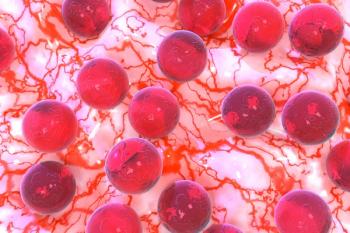
50 Nipple Sparing Mastectomy With Immediate Lift Using Vertical Technique: Our Initial Experience
Background
Nipple-sparing mastectomy (NSM) is a surgical approach that allows for preservation of the nipple areolar complex (NAC). Patients who have large breasts with moderate to severe ptosis are typically not eligible for NSM secondary to increased risk of complications. We describe a novel technique of NSM using a vertical lift pattern to create a reduced skin envelope for implant- or flap-based reconstruction. Our aim is to study patient characteristics, operating room duration, outcomes, and complications to determine patient selection criteria for this approach.
Methods
We reviewed cases of bilateral vertical lift pattern nipple-sparing mastectomy performed by a single surgeon with immediate implant-based or autologous reconstruction at our institution between June 2022 and April 2023. All patients had greater than size C-cup breasts and/or moderate to severe breast ptosis. In each case, postmastectomy vertical pattern skin reductions were performed, and the NAC was transposed superiorly through a keyhole in the deepithelialized skin flap.
Results
A total of 24 breasts in 12 patients with primary breast cancer underwent bilateral vertical pattern lift NSM with immediate reconstruction. The average age was 49.1 years and average BMI was 33.7 kg/m2. All 12 patients had large, ptotic breasts. Seven patients underwent axillary sentinel lymph node biopsies and 2 patients underwent targeted axillary lymph node dissection. Seven patients underwent direct-to-implant (DTI) reconstruction and 5 patients underwent autologous reconstruction with deep inferior epigastric perforator (DIEP) flaps. For the patients who underwent DTI reconstruction, mean operative time was 3.4 hours and length of stay was 9.8 hours. With autologous reconstruction, mean operative time was 9.9 hours and length of stay was 2.5 days. One patient with BMI 44.3 kg/m2 experienced bilateral mastectomy flap and NAC necrosis requiring revision surgery. Only 2 other patients experienced unilateral partial nipple necrosis, which healed by secondary intention.
Conclusions
At our institution, vertical lift pattern NSM is a relatively safe surgical option for women with larger, ptotic breasts. Skin reduction with deepithelialization and tissue infolding maintains perfusion to promote NAC and skin flap survival with immediate implant- or flap-based reconstruction. Careful selection criteria including BMI, breast size, and degree of breast ptosis should be used when offering this approach to patients to reduce complication risk.
Newsletter
Stay up to date on recent advances in the multidisciplinary approach to cancer.


















































































